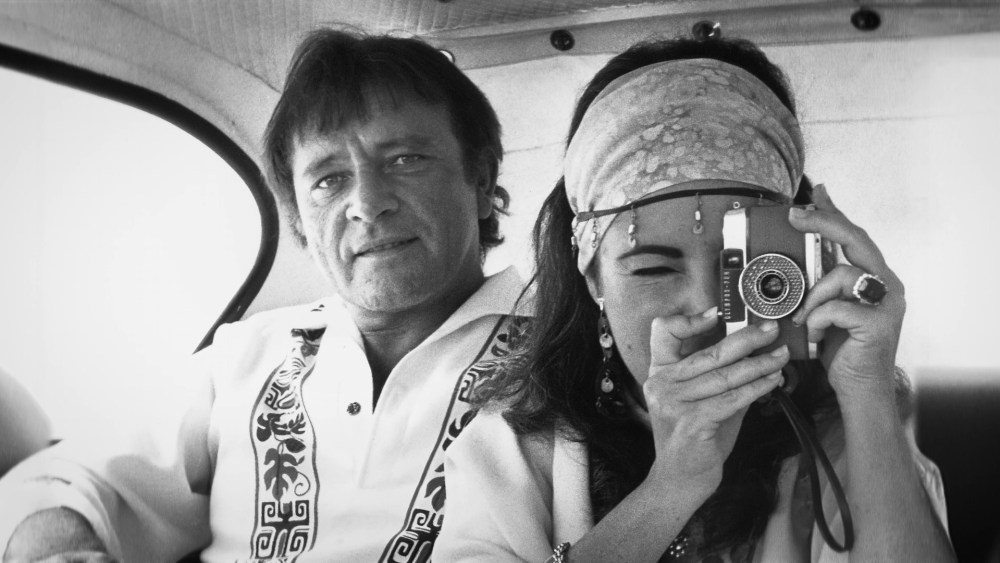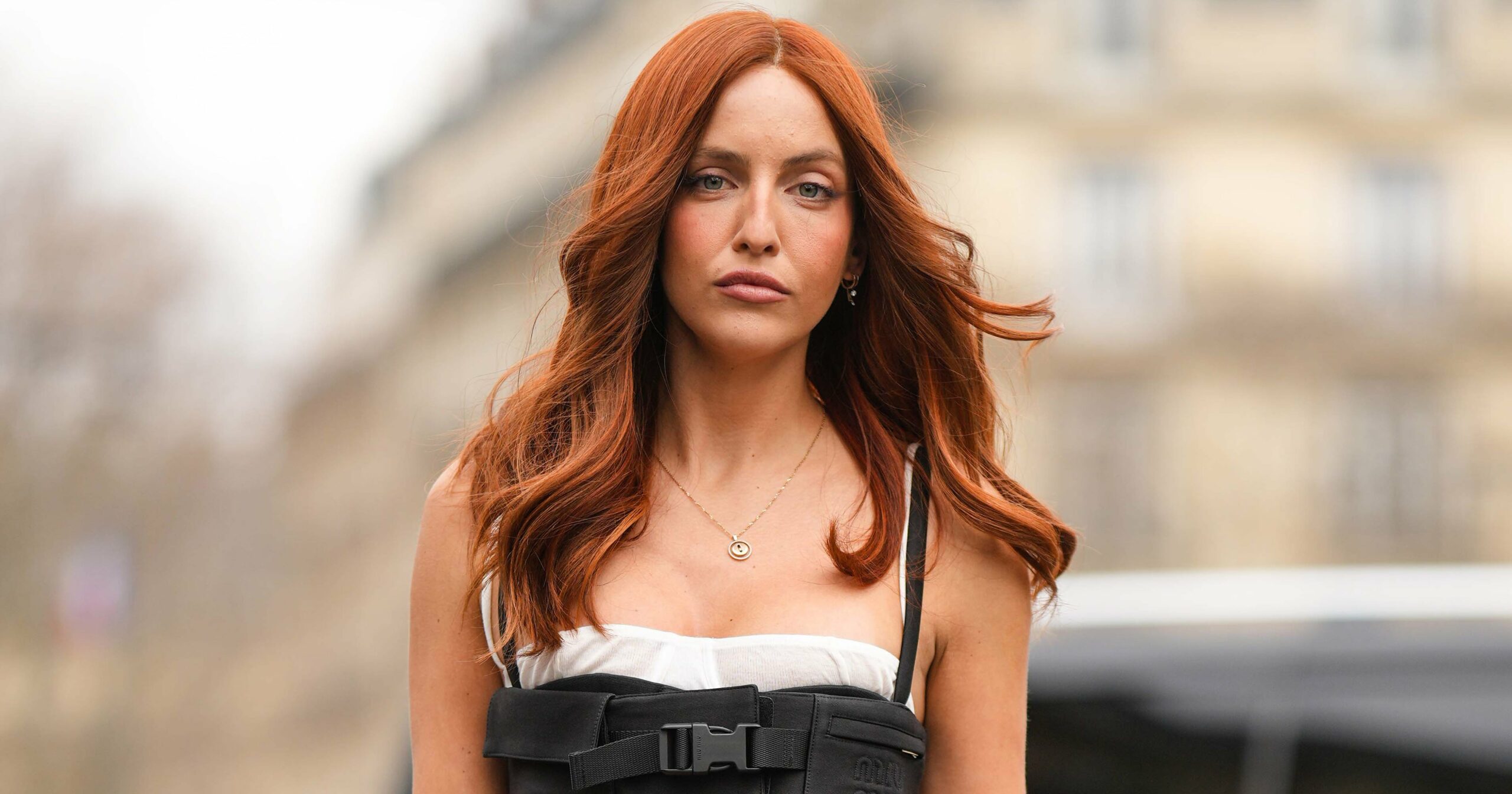Before Princess Diana, or Michael Jackson, or Britney Spears, there was Elizabeth Taylor. The first mega star of the modern era, she was isolated, hounded and, for a time, undone by fame.
In “Elizabeth Taylor: The Lost Tapes,” director Nanette Burstein has reconstructed Taylor’s life through 40 hours of recently unearthed audio tapes recorded over several weeks in 1964, with “Life” magazine writer Richard Meryman. The interviews were for a memoir that is no longer in print, and probably did not achieve anything close to the brutal candor of Taylor’s own words.
The audio tapes were found several years ago in the attic of Meryman’s home and then given to Taylor’s estate. Sound designer Tom Paul has done an admirable job cleaning up the recordings, which were not always in a quiet room.
You May Also Like
“Sometimes [the interviews] were in her house and the sound quality was good,” Burstein tells WWD. “Other times they were at a nightclub. At one point, they were on a houseboat, right next to the engine room. There was this horrible flonking noise in the background.”
Interestingly, Roddy McDowell, whom Taylor met when they were child costars in “Lassie Come Home,” was present for some of Meryman’s interviews with Taylor. Their close friendship is apparent, and at times McDowell is the one asking Taylor questions. Home movies and photographs from the Taylor’s personal archive bolster the film’s intimate, immersive quality. And vintage TV news interviews with Taylor and Burton, Eddie Fisher and Debbie Reynolds, as well as new interviews with Taylor’s longtime assistant Tim Mendelson and friends Liz Smith and Doris Brynner, lend the narrative depth.
The film, which premiered at this year’s Cannes Film Festival and makes its debut Saturday on HBO, unspools linearly with Taylor’s voice heard over stills and footage spanning the arc of her career, which has remarkable echoes of our current era, including the treatment of child stars, voyeuristic obsession with celebrity and stubbornly persistent misogyny in Hollywood.
Beating the System
Taylor — who made her film debut at the age of 11, in 1943’s “Lassie Come Home” — was a celebrity for virtually her entire life. Her stardom straddled the before-and-after of the studio system, a structure that pigeonholed her as an ingenue and sex symbol, and a caricature that she struggled to overcome, and finally truly broke free of in the 1966 classic film “Who’s Afraid of Virginia Woolf?” when she gained weight, and aged herself (with prosthetics, facial jowls and gray streaks in her raven hair) in order to play one half of an embittered, alcoholic married couple opposite Richard Burton, her real-life husband at the time. Taylor won an Oscar, Burton did not.

She reached the apex of her stardom in the 1960s, and became the first actor, man or woman, to earn $1 million for a movie for 1963’s “Cleopatra” (plus 10 percent of the film’s gross profit). And her romantic entanglements and many marriages (eight to seven men; she married and divorced Burton twice) made her catnip to a press pack unleashed from the manufactured stories previously doled out by the Hollywood studios.
Taylor talks of her regret over her lack of formal education and the woefully inadequate schooling available at MGM Studios, which, she said, required only three hours each day of instruction, while she could be on set for eight hours. “I hated it,” she said. “There was something so false about trying to pack in your education; cram in 10 minutes here, 15 minutes there.”
She was a teenager playing adult roles; in “Conspirator,” a 16-year-old Taylor was cast as the wife of 37-year-old Robert Taylor. Her first screen kiss came only a week after her first real-life kiss. “I was thrown into the adult world, had to behave like a sophisticated woman but was a terrified little girl.”
In her real life, observed Burstein, “she was very sheltered. And she’s playing these very romantic roles, so she has this warped idea of love. She was in love with love, which I think followed her for the rest of her life.”
Tracing Her Marriages
Her brief first marriage to hotel heir Conrad “Nicky” Hilton, 23, when she was 18, ended after just eight months. Hilton was an abusive alcoholic, who, Taylor said, kicked her in the stomach, causing a miscarriage.
Taylor’s many marriages, and the way she was portrayed by the media, forms the spine of Burstein’s film. In the post-#MeToo era, there may be more awareness about sexist language and tropes. But the recent past includes plenty of examples, including Britney Spears, Janet Jackson and Madonna.
“She was basically slut shamed,” said Burstein. “People are more aware of those optics now. But there are many stories from the 1990s and early 2000s that are really not that different.”
The saga of “Cleopatra” is the most infamous scandal in Taylor’s biography; it included a wildly over-budget folly of a film that almost bankrupted 20th Century Fox, a near-death illness for Taylor (she contracted pneumonia and underwent an emergency tracheotomy) and a multipart love quadrangle that earned the wagging finger of shame from the Vatican (echoes of Madonna).
At the start of filming, Taylor was in a loveless marriage with Eddie Fisher, whom she wed in 1959, after the sudden death in a plane crash of her third husband, the producer Mike Todd. The media portrayed Taylor as a homewrecker who lured Fisher away from Debbie Reynolds, whose persona as America’s sweetheart Taylor mocks in her interview.
“She put on such an act, with the pigtails and the diaper pins,” Taylor said. And Taylor admitted that she never loved Fisher, he was simply a confidant after Todd’s death in 1958.
“Eddie made sure that I felt lonely. We never went out. It was like he didn’t like me to mingle with other people,” said Taylor. “It was like being locked up.”
‘Le Scandal’ in Rome
But her affair with Burton on the Rome set of “Cleopatra” was an escalation even from the already frenzied heights of Taylor’s celebrity. Burton, who was also married at the time, took to calling the episode “le scandal.” The Vatican newspaper published a moralistic rebuke implying that Taylor’s children should be taken from her, even Taylor’s father, she said, called her “a whore.” Photographers knocked on the door of Taylor’s rented villa on the outskirts of Rome disguised as priests and plumbers. They chased her for miles through the streets. There were bomb threats. In a voiceover, George Hamilton mused about the provenance of the term paparazzi: “It meant a bunch of guys with cameras looking for Elizabeth Taylor. They were not going for glamour anymore. They were going for destruction.”
Added Burstein: “She was such a legendary figure. And the public was fascinated by her, but they were partially fascinated by her because of the scandal. And it was humiliating for her.”
Burstein and writer and editor Tal Ben-David use archival footage to stitch together the later chapters of Taylor’s life, including struggles with drugs and alcohol that led to a stint at the Betty Ford Center. Taylor said she had taken sleeping pills every night for 45 years. “I was at the point where I would take one or two Percodan mixed with booze before I could go out,” she told Dominick Dunne in a 1985 interview.
Her most enduring friendships in Hollywood were with gay men (McDowell, Rock Hudson, Montgomery Clift, her costar in “A Place in the Sun”). So, in the 1980s, when gay men began to die of AIDS, she threw herself into raising awareness and money to combat the disease. She deplored the hypocrisy of the Hollywood community’s silence about AIDS. And in 1985, she was among the cofounders of the American Foundation for AIDS Research (amfAR). The first donation was $250,000 from Hudson, two months before he died of the disease.
“Fame for so many decades had been the bane of her existence and the thing that had caused her a lot of pain,” said Burstein. “And then, she realized, ‘Oh my god, this is my superpower. I can do something that I am most proud of in my life, and that is raise money, millions of dollars, and awareness about the AIDS crisis.’ I think that is what she wanted as her legacy, even more than the movies she made.”
Taylor was raised in the Old Hollywood spin factory, one that in many ways mirrors the manufactured virtual lives of today’s social media dwellers. At one point, Meryman asks her if she cares about her “bad publicity.” Her answer shows that she was well aware of the con.
“I gave up a long time ago. Probably I could hire a press agent to fix my image, I could probably even try and fix it myself by doing a lot of justifying,” she said. “But I’m not going to. It’s a losing game. People already have a set image, they want to believe either the good or the bad. And if you try and explain then you lose yourself along the way.”




